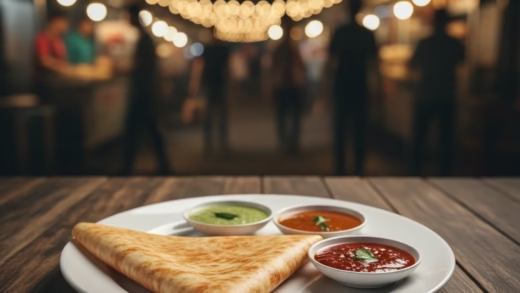Buah Dabai

Introduction
Buah Dabai—widely known as the Sarawak Olive—is one of Malaysia’s most remarkable indigenous fruits, renowned for its creamy texture, nutty flavour, and strong cultural identity. Traditionally enjoyed by Sarawak’s native communities, Dabai has evolved into a culinary icon with growing popularity across Malaysia and Southeast Asia.
As global consumers seek authentic, locally sourced, and nutrient-rich ingredients, Buah Dabai is gaining recognition as a premium superfood and a versatile culinary asset. Its distinctive flavour profile, seasonal exclusivity, and deep connection to Sarawakian heritage position it as a high-value commodity in Malaysia’s agro-food landscape.
Origin
Buah Dabai (Canarium odontophyllum) is native to Borneo, particularly Sarawak, where it has been consumed for generations by the Dayak communities. The species belongs to the Burseraceae family and thrives in tropical lowland forests.
Historically harvested from the wild, Dabai’s increasing demand has accelerated small-scale cultivation in riverine and fertile alluvial regions. Today, it stands as a symbol of Sarawak’s agricultural identity, attracting interest from both domestic buyers and international niche markets.
Category
| Scientific Name | Family | Category | Type (Seasonality) |
|---|---|---|---|
| Canarium odontophyllum | Burseraceae | Tropical Fruit | Seasonal (Nov–Jan peak) |
Appearance
Buah Dabai is a small, oval fruit measuring approximately 3–4 cm. When fully ripe, it features a glossy black or deep purple skin. The flesh is firm prior to soaking, transforming into a soft, creamy yellow interior once warmed. Each fruit contains a hard seed with edible kernels valued for their almond-like taste.
Distinctive visual markers include:
- Shiny dark exterior
- Thick, firm rind
- Creamy, buttery flesh
- Three-compartmented seed
Popular Varieties
| Variety | Local Name | Distinctive Features | Region of Prominence |
|---|---|---|---|
| Standard Dabai | Dabai Hitam | Black skin, rich buttery flavour | Sibu, Kapit |
| Red Dabai | Dabai Merah | Reddish skin, softer and sweeter flesh | Song, Kanowit |
| Large Premium Dabai | Dabai Gergasi | Bigger size, bolder taste, premium category | Sarikei, Mukah |
Preparation
Buah Dabai is known for its unique preparation method, typically enjoyed after soaking:
- Fresh: Soaked in warm water with a pinch of salt to soften the flesh.
- Snacks: Eaten with soy sauce, sugar, chili flakes, or crispy anchovies.
- Desserts: Used in artisanal cakes, ice creams, and fusion desserts.
- Traditional Cuisine: Featured in Nasi Goreng Dabai, sambal dabai, and stir-fry dishes.
- Beverages: Incorporated into modern juices, smoothies, and fermented drinks.
Equipment
- Bowl for soaking
- Kettle for warm water
- Knife for slicing
- Nutcracker/pestle for seed extraction
- Sealed container for storage
Taste
Buah Dabai is celebrated for its rich, buttery, and slightly umami flavour. It blends mild sweetness with gentle bitterness, reminiscent of olives, chestnuts, and avocado. Seasoning enhances its complexity, allowing the fruit to transition seamlessly from snack to gourmet ingredient.
Texture
When softened, Dabai delivers a smooth, buttery, melt-in-mouth texture. Its flesh is dense yet creamy, offering a luxurious mouthfeel that makes it excellent for spreads and cooked dishes.
Aroma
Dabai’s aroma is earthy, nutty, and moderate in intensity—distinctive yet not overpowering, complementing its savoury culinary applications.
Cultural Significance
Buah Dabai holds a prestigious place in Sarawak’s food heritage. It is commonly exchanged as a festive gift, served during family gatherings, and celebrated at local markets during harvest season. Its association with indigenous Dayak traditions reflects unity, ancestral knowledge, and community pride. Today, it is also a flagship ingredient in Sarawak’s tourism and culinary branding initiatives.
Regional Cultivation
| State/Region | Famous For | Harvest Period |
|---|---|---|
| Sibu | High-quality Dabai supply | November–January |
| Kapit | Wild-grown Dabai varieties | November–December |
| Sarikei | Premium large-size fruits | December–January |
| Mukah | Community-driven cultivation | November–January |
Social Context
In Sarawak, Dabai is a seasonal highlight at markets, roadside stalls, and local eateries. Families traditionally prepare Dabai together, making it a symbol of togetherness. During peak months, it becomes a central ingredient in local street food and home-cooked dishes, while packaged Dabai oil, paste, and pickled Dabai attract tourists seeking authentic Sarawakian products.
Nutritional Information (per 100g)
| Nutrient | Amount (Approx.) |
|---|---|
| Calories | 350 kcal |
| Carbohydrates | 14 g |
| Protein | 6 g |
| Fat | 32 g |
| Fiber | 2.5 g |
| Vitamins | Vitamin E, B-complex |
| Minerals | Calcium, Iron, Magnesium |
Health Benefits
- High in healthy fats essential for heart health.
- Vitamin E content promotes skin protection and anti-aging.
- Rich in antioxidants that fight oxidative stress.
- Contains minerals supportive of bone and muscle strength.
- Provides sustained energy due to balanced fat-carbohydrate ratio.
Dietary Restrictions
- High-fat content may require moderation for individuals with strict dietary limits.
- Calorie-dense; not ideal for low-calorie diets.
- Those with sensitivity to oily fruits should introduce it gradually.
Allergens
Potential sensitivity may occur among individuals allergic to tree nuts or oily seeds due to Dabai’s rich oil content.
Cost
- Standard Dabai: RM25–RM45 per kg
- Red/Premium varieties: RM50–RM80 per kg
- Large premium Dabai: RM80–RM120 per kg
Prices fluctuate during off-season, often spiking due to high demand and limited supply.
Production & Export
Buah Dabai is gaining traction in Malaysia’s export markets, with key destinations including Singapore, Brunei, Hong Kong, and selected East Asian gourmet distributors. Innovations such as vacuum-packed Dabai, freeze-dried snacks, Dabai oil, and Dabai paste have expanded commercial potential. With global interest in indigenous superfoods rising, Dabai is poised for growth in premium health food and culinary markets.
Symbolism
Buah Dabai symbolises Sarawak’s authenticity, biodiversity, and cultural richness. It represents abundance, unity, and the preservation of indigenous wisdom. As it enters modern culinary and commercial spaces, Dabai also reflects Malaysia’s commitment to elevating native ingredients onto the global stage.





Comments are closed.